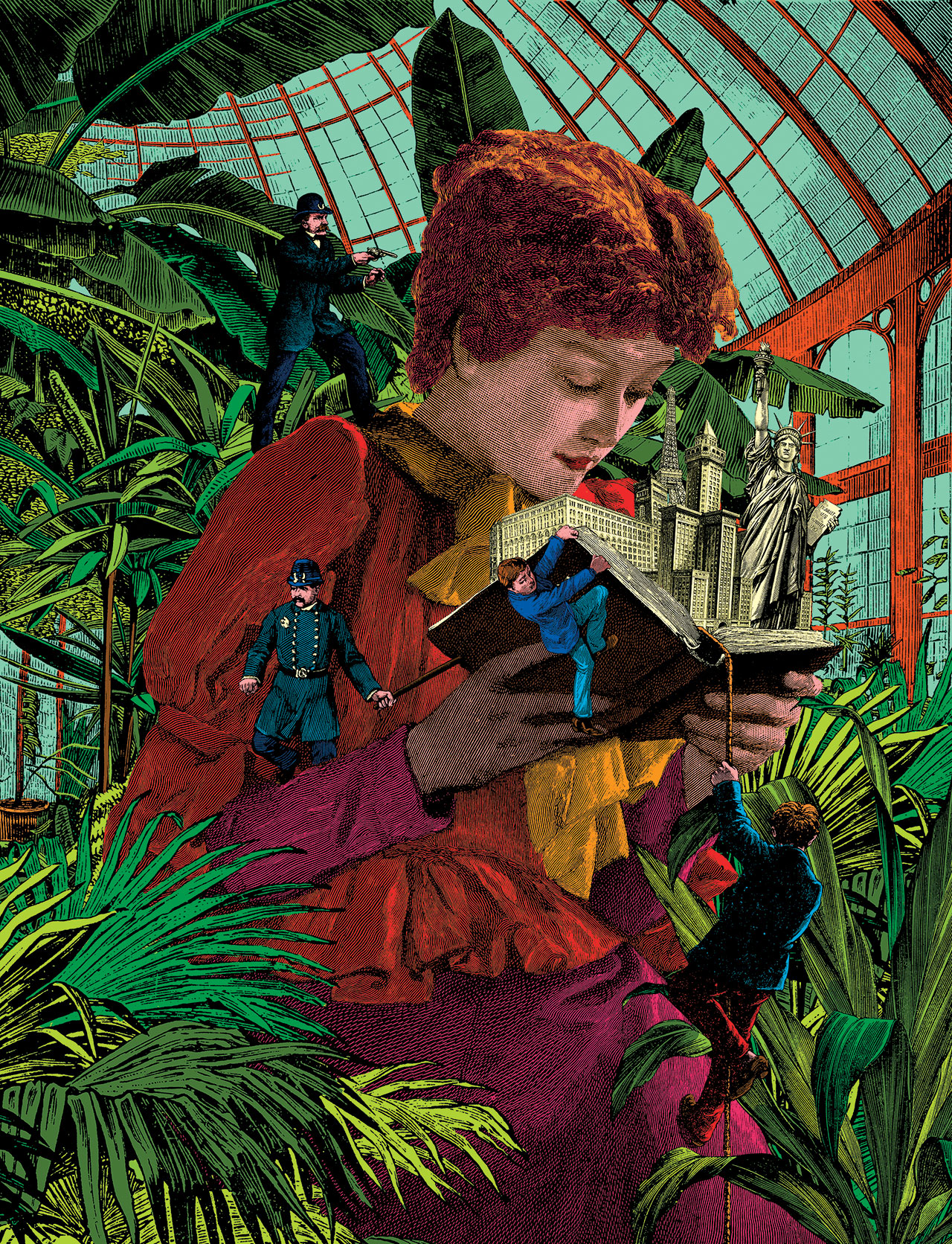
Many a Grimm Brothers tale can be unraveled to find disturbing characters, stark truths, and other less-than-pleasant — and definitely not kid-friendly — themes. It’s one thing to discover these wicked twists and another to bring them to life. In his “Modern Grimm” series, Björn Griesbach illustrates his own interpretations of tales like “Cinderella” and “Sleeping Beauty.” In a modern setting, the characters from these tales become manipulative, sociopathic, and disturbed.
Take the Pied Piper: a pupil-less, bald man projected onto a screen. Shadows of children keep their eyes on him as he plays a red flute, the only bright color in the entire composition. The description under the illustration reads, “Originally from the pest control business, now a phenomenon of children’s entertainment. Has the gift of casting a spell over kids of all ages and thus making them his submissive discliples.”

Twisted? Yes. Far from our modern reality? Maybe not. Some semblance of modern-day anxieties and societal struggles pops up within his works, just as the color red stands out against mostly brown and white compositions. The fairytales take on a different life, one in which they seem less like fantasies and more like prescient metaphors.
The theme of transferring age-old stories into strange visions is Griesbach’s forte. The “La Nausée” series features lines from Jean-Paul Sartre’s existential novel of the same name. In the “Hesse” series, Griesbach takes inspiration from the work of Herman Hesse. The latter includes eerie portraits that seem almost translucent except for a black symbol in the middle of each character’s face, a marker of their internal struggles. “La Nausée” features surreal scenes, again mostly rendered with subdued colors that contrast with pops of green and blue.
In each composition, Griesbach challenges the eye to deal with elements that seem out of place. But once your vision adjusts to these disturbing elements, the image doesn’t seem so unfamiliar after all.










 Many a Grimm Brothers tale can be unraveled to find disturbing characters, stark truths, and other less-than-pleasant — and definitely not kid-friendly — themes. It’s one thing to discover these wicked twists and another to bring them to life. In his “Modern Grimm” series,
Many a Grimm Brothers tale can be unraveled to find disturbing characters, stark truths, and other less-than-pleasant — and definitely not kid-friendly — themes. It’s one thing to discover these wicked twists and another to bring them to life. In his “Modern Grimm” series,  Illustrator-collagist
Illustrator-collagist  French duo
French duo  New Zealander
New Zealander  When Yeats wrote that "love comes in at the eye,” he could have been thinking of the work of Vienna-based
When Yeats wrote that "love comes in at the eye,” he could have been thinking of the work of Vienna-based